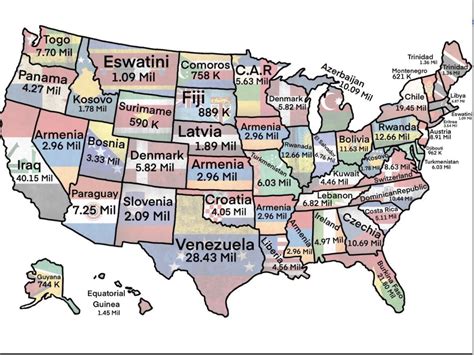California's Size: Is it Really That Much Bigger Than El Salvador?
California, the Golden State, conjures images of Hollywood glamour, Silicon Valley innovation, and stunning natural landscapes. But just how big is it, really? And is it truly as much larger than El Salvador as many believe? Let's dive into a comparison of these two geographically disparate regions.
Comparing the Land Areas of California and El Salvador
To understand the scale difference, we need to look at the land areas of both California and El Salvador. California boasts a land area of approximately 163,696 square miles (423,970 square kilometers). El Salvador, on the other hand, covers a significantly smaller area of roughly 8,124 square miles (21,041 square kilometers).
The sheer difference is striking. California is approximately 20 times larger than El Salvador. This isn't just a minor difference; it's a massive disparity in landmass. To put it into perspective, you could fit roughly 20 El Salvadors within the borders of California.
Visualizing the Size Difference
Imagine trying to superimpose El Salvador onto a map of California. You could fit it multiple times within the state's borders, with plenty of space left over. California's diverse geography—from the Pacific coastline to the towering Sierra Nevada mountains and the vast Central Valley—contributes to its expansive size. El Salvador, in contrast, is a much more compact country with a relatively uniform topography.
How many El Salvadors fit in California?
As mentioned above, approximately 20 El Salvadors could fit within California's boundaries. This illustrates the dramatic size difference between the two.
Why the Perception of Size Difference?
The perceived size difference might be amplified by several factors. Firstly, California's prominence in global culture and media often overshadows the relative size of other nations. Secondly, the diverse landscapes of California might create an impression of vastness, while El Salvador's smaller, more homogenous geography might appear less imposing. Finally, maps can be deceiving; the Mercator projection, commonly used in world maps, distorts the relative sizes of landmasses, particularly near the poles.
What contributes to California's large land area?
California's expansive land area is a result of several geographical factors:
- Length of coastline: Its extensive Pacific coastline contributes significantly to its overall size.
- Diverse geography: The state encompasses diverse terrains, including mountains, deserts, forests, and valleys, all adding to its expansive area.
- North-South Extent: California's length from north to south is considerable, contributing to its overall area.
Beyond Land Area: Population and Economy
While land area is a key factor in comparison, it's important to consider other aspects. California has a significantly larger population than El Salvador, reflecting its economic influence and cultural impact on a global scale. The economic output of California dwarfs that of El Salvador, showcasing the difference in scale beyond mere geography.
Conclusion: A Significant Size Difference
In conclusion, the assertion that California is significantly larger than El Salvador is accurate. The numerical comparison and the visualization clearly demonstrate a vast difference in land area. While perceptions can be influenced by various factors, the raw data reveals a dramatic disparity in size, highlighting California's substantial geographic expanse compared to its Central American counterpart.

